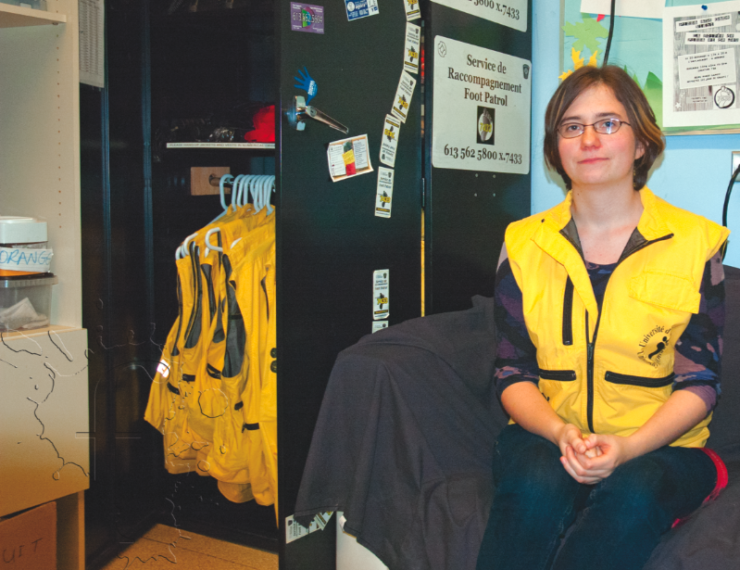U of O prof helps breed rare salamander
Jesse Mellott | Fulcrum Staff
Illustration by Mathias MacPhee
EASTERN HELLBENDERS ARE in a good mood thanks to Vance Trudeau, University of Ottawa professor and research chair of neuroendocrinology in the biology department.
Working in conjunction with the Nashville Zoo, Trudeau developed a formula, which was originally used to breed frogs, to help with the breeding of the eastern hellbender, an extremely rare type of salamander found in the southern and eastern United States.
Trudeau developed a hormone to induce spawning in frogs and published a paper on the results. He said his work with the frogs caught the attention of the people at the Nashville Zoo.
“About a year and a half [to] two years ago, they asked if I could help with the hellbender—they haven’t been able to get them to breed,” said Trudeau. “The method is to induce spawning. The whole idea is to get the animal to release its own reproductive hormones at the right time. It’s tricking the brain and pituitary to release its own hormones, and that’s the secret.”
According to Dale McGinnity, the curator of ecotherms at the Nashville Zoo, this is the second occurrence of using biotechnology on a hellbender to get them to breed. The Saint Louis Zoo was able to breed Ozark hellbenders in captivity for the first time in 2011.
“[The Saint Louis Zoo] were able to breed the Ozark hellbender last year, but they are doing it using artificial streams systems; we’re doing it more in a laboratory setting,” said McGinnity. “Professor Trudeau’s hormone protocol amphiplex [is] to have a female produce eggs, then we can fertilize those eggs with a whole bunch of different males’ eggs so we can produce a really genetically diverse group of offspring potentially [for] reintroduction or conservation programs.”
Trudeau was assisted by two post-doctoral fellows, Laia Navarro-Martin and Christine Hamilton, and U of O biology graduate Lisa Bulaeva, who is working as a research assistant.
The two different trials were during the spring and winter sessions; the frogs, like the eastern hellbenders, were helped along in reproduction by using Trudeau’s Amphiplex formula, as Navarro-Martin explained.
“We collected some frogs and stored them in the lab,” said Navarro-Martin. “We had two different trials—one was done [during] the reproductive season, so that means that we tried to breed the frogs in captivity.”
Trudeau has also been using the same methods to help other zoos with breeding different species.
“There [are] other protocols and other methods, but it’s very species-specific,” he said. “The idea of mine is that it shouldn’t be species-specific because it is based on evolutionary principles. My method is tricking an animal to release its own hormones. If the animal is in breeding condition, my method should work.”
The eastern hellbender lives in cold water streams with high oxygenation rates. The hellbender, the largest salamander in North America, is considered near endangered, and scientists believe that in the face of increasing pollution, the hellbender could face possible extinction.






